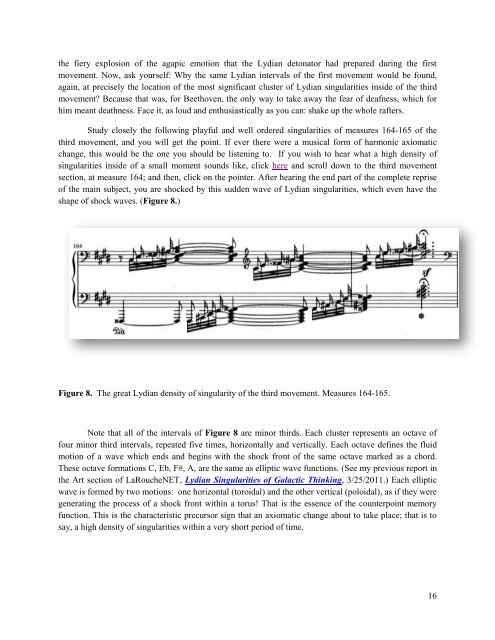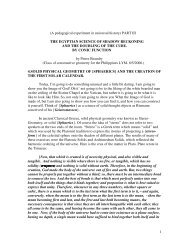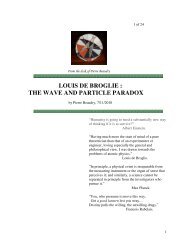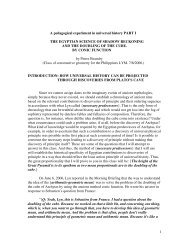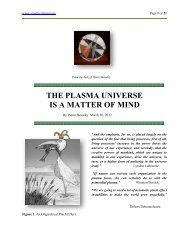BEETHOVEN SONATA OPUS 27, NO. 2.pdf - Pierre Beaudry's ...
BEETHOVEN SONATA OPUS 27, NO. 2.pdf - Pierre Beaudry's ...
BEETHOVEN SONATA OPUS 27, NO. 2.pdf - Pierre Beaudry's ...
You also want an ePaper? Increase the reach of your titles
YUMPU automatically turns print PDFs into web optimized ePapers that Google loves.
the fiery explosion of the agapic emotion that the Lydian detonator had prepared during the first<br />
movement. Now, ask yourself: Why the same Lydian intervals of the first movement would be found,<br />
again, at precisely the location of the most significant cluster of Lydian singularities inside of the third<br />
movement? Because that was, for Beethoven, the only way to take away the fear of deafness, which for<br />
him meant deathness. Face it, as loud and enthusiastically as you can: shake up the whole rafters.<br />
Study closely the following playful and well ordered singularities of measures 164-165 of the<br />
third movement, and you will get the point. If ever there were a musical form of harmonic axiomatic<br />
change, this would be the one you should be listening to. If you wish to hear what a high density of<br />
singularities inside of a small moment sounds like, click here and scroll down to the third movement<br />
section, at measure 164; and then, click on the pointer. After hearing the end part of the complete reprise<br />
of the main subject, you are shocked by this sudden wave of Lydian singularities, which even have the<br />
shape of shock waves. (Figure 8.)<br />
Figure 8. The great Lydian density of singularity of the third movement. Measures 164-165.<br />
Note that all of the intervals of Figure 8 are minor thirds. Each cluster represents an octave of<br />
four minor third intervals, repeated five times, horizontally and vertically. Each octave defines the fluid<br />
motion of a wave which ends and begins with the shock front of the same octave marked as a chord.<br />
These octave formations C, Eb, F#, A, are the same as elliptic wave functions. (See my previous report in<br />
the Art section of LaRoucheNET, Lydian Singularities of Galactic Thinking, 3/25/2011.) Each elliptic<br />
wave is formed by two motions: one horizontal (toroidal) and the other vertical (poloidal), as if they were<br />
generating the process of a shock front within a torus! That is the essence of the counterpoint memory<br />
function. This is the characteristic precursor sign that an axiomatic change about to take place; that is to<br />
say, a high density of singularities within a very short period of time.<br />
16


